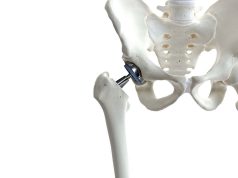Density of neurosurgery trainees higher in high-income countries than low-, lower-middle-, upper-middle-income countries
By Elana Gotkine HealthDay Reporter
TUESDAY, Jan. 16, 2024 (HealthDay News) — There are considerable global disparities in the neurosurgeon workforce and neurosurgery training programs, according to two studies published online Jan. 16 in the Journal of Neurosurgery.
Saksham Gupta, M.D., from Brigham and Women’s Hospital in Boston, and colleagues quantified the number and distribution of consultant neurosurgeons worldwide in a subanalysis of an electronic cross-sectional survey. Data were obtained from 192 countries and 25 additional territories, independent states, and disputed regions. The researchers identified an estimated 72,967 neurosurgeons worldwide, representing a global pooled density of 0.93 per 100,000 people and median country density of 0.44 per 100,000. From low-income countries (LICs) to lower-middle-income (LoMICs), upper-middle-income (UpMICs), and high-income countries (HICs), the density of consultant neurosurgeons increased (0.12, 0.37, 1.13, and 2.44 per 100,000 people, respectively). More frequent access to resources and equipment was seen for neurosurgeons in countries with higher income-level designations.
In a second study, Gupta and colleagues identified the types of training programs in the global neurosurgery workforce in a subanalysis of a cross-sectional study. Data were obtained from 187 countries and 25 territories, states, and disputed regions. The researchers identified 1,261 training programs and 10,546 trainees within the regions, for a pooled global density of 0.14 neurosurgery trainees and median national density of 0.06 trainees per 100,000 people. Density was higher in HICs than in UpMICs, LoMICs, and LICs (0.48, 0.09, 0.06, and 0.07 per 100,000 respectively). LICs had the poorest availability of subspecialty training and resources among countries with training programs.
“Collaboration between low- and middle-income countries and high-income countries as well as between low- and middle-income countries themselves is key and will help new perspectives flourish and best practices spread,” Gupta said in a statement.
Abstract/Full Text 1
Abstract/Full Text 2
Copyright © 2024 HealthDay. All rights reserved.








